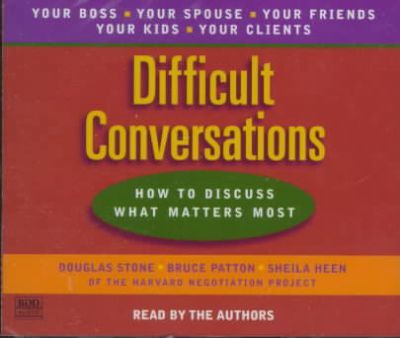
The authors define difficult conversations as ones where there is a gap between what you are thinking and what you are saying. They offer 2 valuable things: a way to understand what is going on and a map to find your way through. For example, in understanding what is going on it helps to be aware that there are three streams going on in the conversation.
The “What Happened” conversation is the one where we get sucked into the trap of debating who is right and wrong. The “Feelings” conversation is there whether we like it or not. It is fruitless to remain in logic alone because unexpressed feelings will leak into the conversation in a less than helpful way if we do not address them directly.
Thirdly, do not underestimate the threat to identity for all parties. Be aware of the “Identity” conversation. There are many practical suggestions in the book and we have used the wisdom from it numerous times since reading it.
